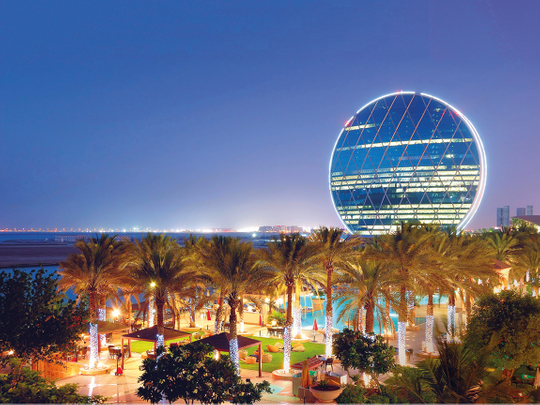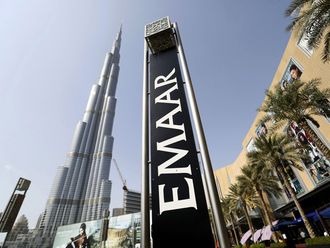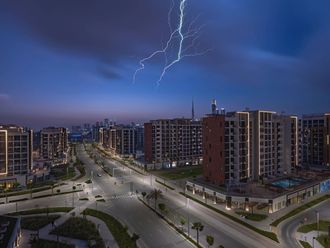
The recent strategic alliance announced by two of the UAE’s biggest developers has brought the spotlight on a trend that had otherwise swept the real estate industry in the past few years without much fanfare: joint ventures (JVs). Dubai-based Emaar Properties and Abu Dhabi’s Aldar Properties last month signed a deal to develop Dh30 billion worth of UAE and international projects. It is indeed a staggering deal in terms of size and significance in the industry.
JVs as a business strategy are utilised differently from one company to another. For savvy investors who have held plots in Dubai over the past several years, they may now find value in getting into a JV with a capable developer, instead of finding the means to develop the property themselves. For struggling developers, a JV is most beneficial as the Dubai Land Department (DLD) has implemented strict off-plan regulations that have made it tougher for players who do not have firm financial footing to build on their own.
For many smaller and struggling developers, JVs could be the difference between survival and extinction.
Last month, the DLD added an extra layer of protection for buyers purchasing off-plan properties by requiring Dubai property developers to put 20 per cent of the total project value in escrow upfront before they can begin work on their project. The previous regulation required 20 per cent of construction cost as bank guarantee.
In addition, developers have to pay all the expenses related to the land and should have the land under its name. With all these requirements being mandatory to start construction, the market is expected to see both the landowners and the developers who have the real estate development expertise to view JVs as an attractive structure to share the overall cost of the project with a business partner. Property experts believe JVs will become a driving force in the market, ultimately creating more real estate activity in the years to come.
“Joint ventures offer attractions to both the government and the private sector,” says Craig Plumb, head of research at JLL Middle East and North Africa. “They allow projects to go ahead that would not occur if it was not for the cooperation and collaboration of different parties in the market.”
Riyaz Merchant, CEO of Realty Force Real Estate, says real estate joint ventures are an excellent development in Dubai, as they create a more efficient means to develop real estate. “A plot of land that lays empty gets zero value for the owner, and the barren space is also a waste area for the city planners,” Merchant explains. “When more developers go for joint venture deals, it will be a great development for the property sector, the nation, the landowner as well as the developer.”
He clarifies that JVs are not new in Dubai’s real estate industry, noting that real estate JVs have been forged since 2009, although now he expects to see them more frequently, even among smaller players. Apart from Emaar’s partnership with Aldar, Merchant cites another recent example of a big joint venture between Meraas Holdings and Emaar, who have collaborated to build Dubai Hills Estate, one of the largest master-planned communities in the city with 4,400 villas and town houses and some 22,000 apartments surrounding the golf course.
Joint venture structure
Merchant explains that a joint venture is simply two people or parties getting together for a mutually beneficial relationship. “One is the person who owns the land. This person had invested in the plot with the intent to develop it, but now that his requirement has changed, he cannot build on it on his own,” says Merchant. “In such a situation, he is left with two options. First is to sell the land. Second is to get into a joint venture with a developer and construct either a residential, commercial, hotel or hotel apartment project on it, based on permission from the zoning authority and mutually agreed by both parties.”
He adds that the JV is often based on profit sharing or square footage sharing ratio, wherein a certain percentage goes to the person that owns the land and the rest is taken by the developer to.
“Percentage or square footage sharing ratio can vary depending on the location,” says Merchant. “In prime locations, the sharing variables are different compared to that in the other locations. For example, for locations like Dubailand, Jumeirah Village Circle, Dubai Sports City, Jumeirah Village Triangle, Furjan, IMPZ etc., usually they have a profit-sharing structure of 30 per cent for the landowner and 70 per cent for the developer. However, this too may differ based on the landowner and developer’s agreement and requirements.”
Angel investors
Merchant points out that some developers are now also looking at angel investors as early stakeholders in their projects. These investors commit to putting in a specific investment. For instance, an angel investor could invest an amount equivalent to 20 per cent of the project value, which will cover the escrow requirement and allow the project to move ahead.
“These investors are offered a value deal that is often lower than market valuation, and they become part of the project from start to end and will get a specific part of it that can be divided into some floors, units or wings based on their investment proportion,” says Merchant.
Another structure is the build-to-operate method, wherein master developers offer land on a minimal long-term lease contract to build a school or a hospital. However, only very few players specialise in building schools or hospitals. “For the private clinics and other health care requirements, playschools and nurseries, usually the developer creates a retail area as community centres and offers spaces for lease or sale,” adds Merchant.
JV challenges
While a JV ideally caters to the best interest of all the parties involved, its smooth execution can be affected by a few factors. “Firstly, when the landowner does not make proper land valuation, in such cases a joint venture ceases even before it could start,” says Suraj Rajshekar, general manager of Rocky Real Estate. “For instance, a landowner may have purchased the land for Dh50 million around five years back, but its value today as per the Real Estate Regulatory Agency index and independent evaluator is Dh30 million. In such a case, if the landowner sticks to the Dh50 million valuation, the joint venture cannot happen. Therefore, for any successful joint venture, the landowner should accept the market rates and set a realistic value.”
• The undeveloped nature of the legal framework for public-private partnership deals
• The complexity of deals requires skills that not all parties currently possess
• Uncertainties over short-term market conditions may deter some investors
• Those not taking a sufficiently long-term view of real estate
Source: Craig Plumb
Another problem arises when the landowner wants to be involved in all stages of the development, despite not having the expertise to execute a project.
“If the landowner doesn’t have the necessary know-how, then he should just allow the joint venture partner to [build the project],” he says. “Both parties should agree in principle what type of asset will be constructed, decide on the profit-sharing ratio and get the entire legal framework in place. Finally, let the developer that brings his equity and development knowledge to take the project forward.”
Rajshekar says bringing in a professional real estate broker at an early stage will further strengthen the joint venture. He says the property broker can help both parties work on the legal framework and educate them about the current trends and challenges in the market.
Building alternative assets
The market forces of supply and demand in any developing city always dictate the development pipeline. Even the development of alternative asset and community facilities comes down to fundamentals of supply and demand. “Typically, the funding for hotels and serviced apartments comes partially from the coffers of capable developers and their shareholders and pre-sold units,” says Nathan Hones, COO and partner at Carter Associates. “Therefore, we do not typically see these developers in equity-based partnerships unless they are looking to spread their risk. “Educational and health care projects are different, as they are not funded through pre-sales. Hence, we do see more private partnerships and public-private-partnerships with various build-own-operate-transfer [Boot] and other variations in the market. These are particularly prevalent in more developed real estate markets than Dubai, but we do see this growing in popularity.”
Traditionally in Dubai, developers form partnerships with investment entities. “These partnerships would typically create a special purpose vehicle [SPV] previously set up off-shore but now more commonly on-shore so they can be regulated by the Real Estate Investment Trust,” says Hones. “However, these partnerships are mostly equity investment in nature only and not often involved in the operational aspects of the development.”
He further adds that there is also strong growth in real estate investment trust (REIT) type of partnerships. “Here, a group of investors provides equity through an investment trust, which then purchases typically built assets with an ongoing return on investment,” Hones explains. “Emirates REIT [now known as Equitativa Group] is a good example of where an entity with equity has purchased assets from the owners, i.e. Jebel Ali School and Gems World Academy. This partnership allows the previous owner to release capital to reallocate to other new schools, while still maintaining the brand and operational responsibilities, and the new ownership trust receives a return on investment.”
Hones points out that the key partners on development projects in developed markets tend to be capital-heavy, public-listed companies such as retirement funds and insurance companies, but with no local retirement funds and with a historically volatile real estate sector, these funds tend to invest in more developed and risk-averse markets.
“The sorts of partnership investors we see are cash-rich private companies and semi-government organisations looking to park their capital somewhere where it can grow and produce a return,” he says. “These entities are locally and internationally based and are an important element in assisting the growth of the local development market.”
Craig Plumb, head of research at JLL Middle East and North Africa, says that there has been strong growth in alternative assets in Dubai in recent years. The main reason for this, he says, is that the returns from traditional sectors of the market such as residential, retail, offices and hotels have declined in the face of falling sales prices and increased competition. Developers are therefore now exploring opportunities in new or alternative asset classes, he says.
“The first of these, dating back five to 10 years, is serviced apartments,” says Plumb. “A number of developers are targeting this sector of the market, as it can generate higher returns than traditional residential development. This is evidenced by the growth of serviced apartment supply in areas such as Business Bay and Barsha over the past five years.
“Other sectors that have been targeted more recently [over the past five years] include affordable housing, education and health care. The attraction of these sectors is that there are growing demand and limited supply. These sectors also align with government policies to grow the social infrastructure of Dubai.”
JLL has researched three alternative assets over the past three years, starting with affordable housing in 2015, education in 2016 and health care in 2017. Plumb says that the drivers of each sector vary, but they share the same three primary drivers: alignment with government policies, shortage of supply as developers had focused on more traditional sectors and increased demand in line with population growth and shifting social trends.












